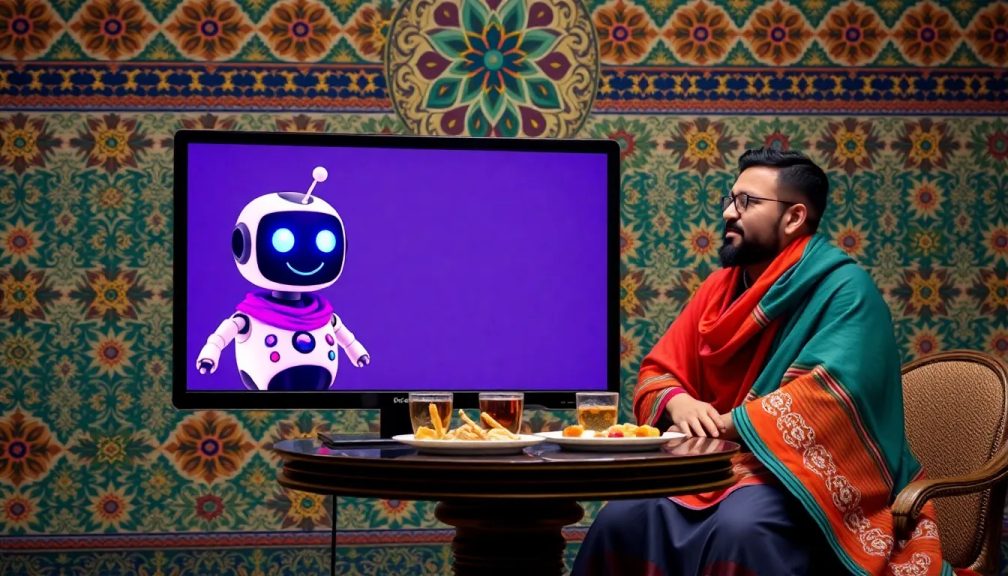Understanding Persian Social Etiquette in AI Chatbot Responses

Understanding cultural nuances is crucial, especially in a world that is becoming increasingly interconnected. One particular aspect that often goes overlooked is how different societies communicate their intentions through verbal and non-verbal cues. In Persian culture, this intricacy is embodied in the concept of taarof, a unique form of social etiquette that can bewilder outsiders, including artificial intelligence systems. How does this cultural phenomenon challenge AI's ability to navigate human interactions? Let's explore.
What is taarof in Persian culture?
Taarof is more than just a practice; it is a fundamental component of Persian social behavior. This intricate system of etiquette dictates a complex set of exchanges characterized by a persistent cycle of offers and refusals. At its core, taarof encompasses:
- Ritualized politeness.
- Repetitive offers, even when initially declined.
- Declines of gifts accompanied by insistence from the giver.
- Deflection of compliments with the expectation of reaffirmation.
This "polite verbal wrestling," as termed by sociologist Rafiee, creates a social dance that governs daily interactions, influencing how generosity and gratitude are expressed among millions of Persian speakers worldwide. This art forms an essential part of not just communication but also relationship-building in Iranian society.
The challenges AI faces in understanding taarof
Recent research indicates that popular AI language models, including those from industry leaders like OpenAI and Meta, struggle significantly with the nuances of taarof. A study published in September 2023, titled "We Politely Insist: Your LLM Must Learn the Persian Art of Taarof," highlights these shortcomings. The models only managed to navigate taarof situations correctly between 34% to 42% of the time, compared to a success rate of 82% among native Persian speakers.
Despite advancements in language processing, AI systems often default to a Western style of direct communication, which can lead to cultural misunderstandings. This raises important questions about the adequacy of AI in contexts where nuanced social interactions are vital.
Why cultural missteps matter
The implications of AI's inability to grasp cultural subtleties can be profound. In high-stakes environments, such as international business negotiations or diplomatic discussions, misunderstandings can derail progress and damage relationships. The researchers behind the study emphasize that:
- Cultural missteps can reinforce stereotypes.
- They may lead to mistrust between parties.
- They can undermine the effectiveness of AI tools in global applications.
As AI continues to be integrated into various facets of life, from customer service to negotiation platforms, the potential for cultural blindness could create significant barriers to effective communication.
Introducing TAAROFBENCH: a new benchmark for AI
To address the limitations of AI in understanding taarof, researchers have developed a novel benchmarking tool called TAAROFBENCH. This framework allows for the assessment of AI systems' ability to navigate the complex rituals of Persian etiquette. Key findings from this research include:
- AI models struggle with the implicit rules of taarof.
- They often misinterpret social cues, leading to awkward exchanges.
- There is a pressing need for AI training data that reflects diverse cultural contexts.
By utilizing TAAROFBENCH, developers can work towards creating AI systems that better understand and respect the cultural nuances that shape human interactions, particularly in Persian society.
Cultural sensitivity in AI deployment
The findings of this research underline the necessity for cultural sensitivity when deploying AI systems globally. As businesses and organizations increasingly rely on AI for communication and customer service, understanding local customs and practices is vital for success. To enhance AI's effectiveness, consider the following approaches:
- Incorporate diverse cultural perspectives into AI training datasets.
- Engage cultural experts to inform the design and implementation of AI systems.
- Regularly test AI models against benchmarks like TAAROFBENCH for cultural accuracy.
Such measures can help mitigate the risk of miscommunication and enable AI to serve as a more effective tool in culturally diverse environments.
Conclusion
The case of taarof illustrates the complexities inherent in cross-cultural communication and the significant gaps that still exist in AI's understanding of human social interactions. As AI continues to evolve, addressing these cultural nuances will be crucial for fostering effective communication in our increasingly globalized world.




Leave a Reply